Contents
- 1 Huntington Library, Art Collections, and Botanical Gardens, California
- 2 Brooklyn Botanic Garden, New York
- 3 Denver Botanic Gardens, Colorado
- 4 United States Botanic Garden, Washington, D.C.
- 5 Desert Botanical Garden Phoenix, Arizona
- 6 Coastal Maine Botanical Garden
- 7 Marie Selby Botanical Gardens, Florida
- 8 Atlanta Botanical Garden, Georgia
- 9 Cleveland Botanical Garden, Ohio
- 10 Missouri Botanical Gardens
- 11 Daniel Stowe Botanical Garden, North Carolina
- 12 Chicago Botanic Garden, Illinois

For any home gardeners who spend their weekends toiling in the backyard to keep their annuals alive and shrubbery in good form, the appeal of a botanical garden is obvious. But even for those lacking a green thumb, spending a languid afternoon in these beautifully biodiverse spaces offers an invigorating way to experience nature throughout the changing seasons.
What differentiates a botanic garden from others is its broader purpose of scientific research, conservation, as well as education and display. A zoo for plants, if you will. Often, botanic gardens will organize their collections by geographic region, while others might group plants to a slightly more creative tune, such as habitat type or theme. And because certain US locations are more amenable to plant life native to that region’s climate, you’ll find that each of these gardens has a distinct focus and strength.
Ahead, take a leisurely stroll through some of the best botanic gardens across the US, from the sandy stretches of the Sonoran Desert to an urban oasis in New York City.
Huntington Library, Art Collections, and Botanical Gardens, California
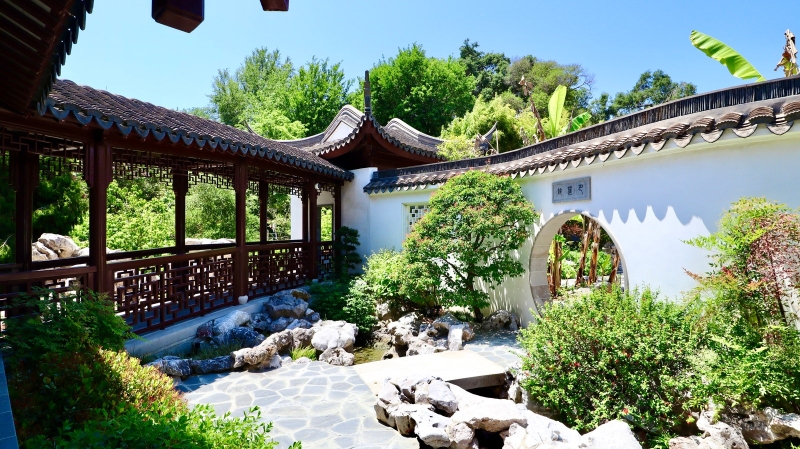
Originally an extensive library, art, and botanical collection privately shared by Henry Edwards Huntington and his wife Arabella, The Huntington opened to visitors in 1928 shortly after their deaths and is among the most celebrated independent research libraries in the world. But even if you’re not coming here to witness, say, the 15th-century Ellesmere manuscript of The Canterbury Tales or paintings by Dennis Hopper and Andy Warhol, you’ll have plenty to explore on the 130 acres of botanicals, sectioned off into over a dozen themed gardens. From a moon bridge and ceremonial teahouse at the Japanese garden, to the largest outdoor collection of mature cacti and succulents in the world at the desert garden, you’ll be spoilt for choice.
Brooklyn Botanic Garden, New York
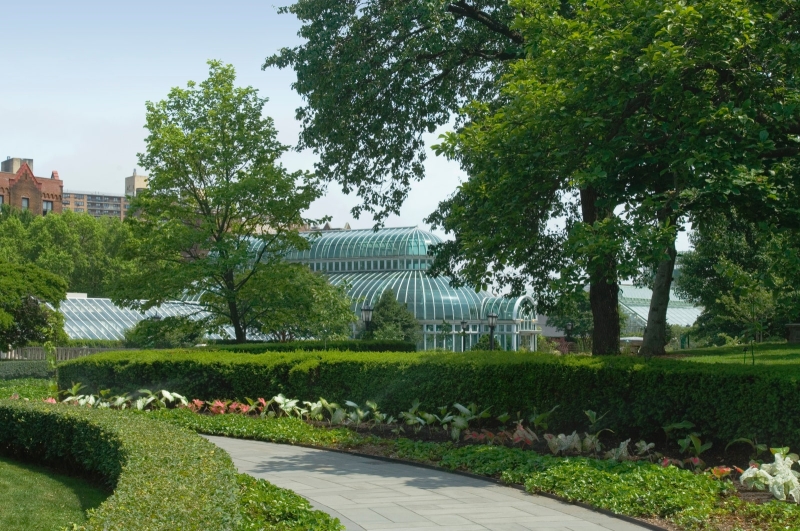
Designed by the Olmsted brothers (sons of Prospect and Central Park designer Frederick Law Olmsted) and opened in 1911, the Brooklyn Botanic Garden is one of New York City’s crown jewels. The garden stretches across 52 acres and holds over 14,000 types of plants. Come spring, the grounds burst with color, namely the 200-plus cherry blossom trees that bloom in April, and the lilacs, bluebells, and peonies springing to life throughout May. In July, visitors can lay out a blanket and enjoy live jazz in the evenings.
Denver Botanic Gardens, Colorado
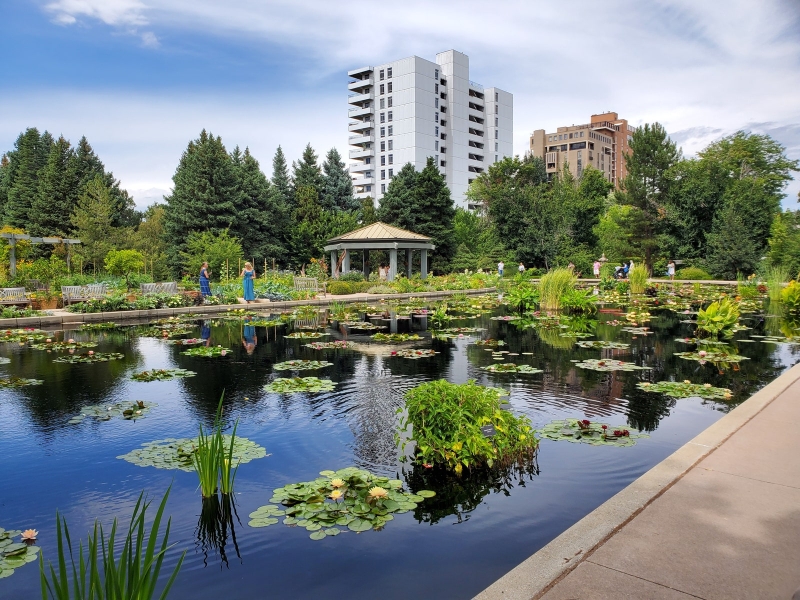
Situated in the city’s Cheesman Park neighborhood, the Denver Botanic Gardens opened in 1951 and connects visitors with fascinating plants, particularly those from the Rocky Mountain region and similar climates found around the world. Take the Gardens of the West, for example, which houses 18 arid gardens filled with plants that thrive in Colorado’s unique landscapes. Or there’s the Water Gardens, peppered with Victorian water lilies and pickerel plants. They’ve even got a summer concert series as well as educational events, like classes on how to create your own hobby greenhouse.
United States Botanic Garden, Washington, D.C.

Considered the oldest continuously operating public garden in America, the United States Botanic Garden traces its roots back to George Washington, who supported the founding of a green space on the National Mall back in the late 18th century. Now, visitors from around the world can explore its 44,000 plants, including historic specimens that date back to the 1842 U.S. Exploring Expedition. Spend your afternoon exploring the Primeval Garden, which time travels back 150 million years ago; or learn about medicinal plants that have been used as remedies for thousands of years.
Desert Botanical Garden Phoenix, Arizona
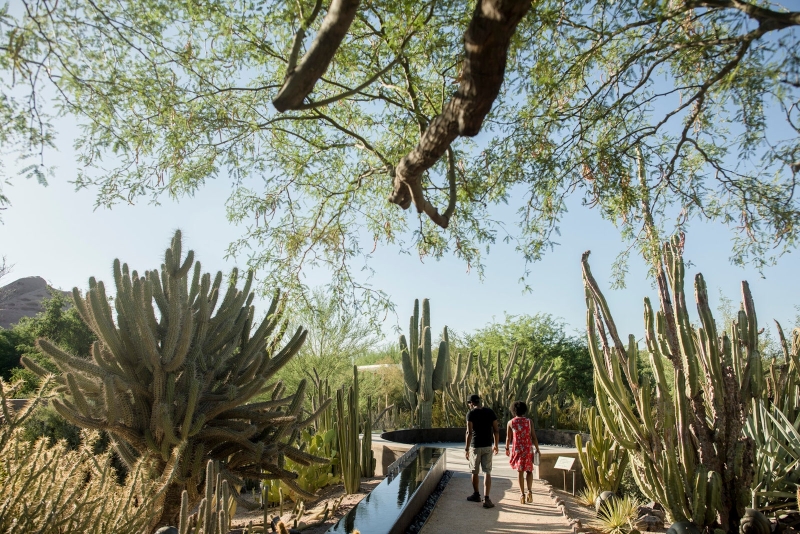
Home to thousands of species of cactus, trees, and flowers from around the world, Desert Botanical Garden in Phoenix is a leader when it comes to research and conservation of desert plants and their peculiar habitats. The garden opened in 1939 and sits among the red rocks of the Papago Buttes, with five thematic trails that visitors can explore, with incredible cacti and desert wildflowers to discover along the way. Also of note: the Sonoran Desert Nature Trail, which offers sweeping mountain views complete with telescopes and an organ pipe cactus forest.
Coastal Maine Botanical Garden
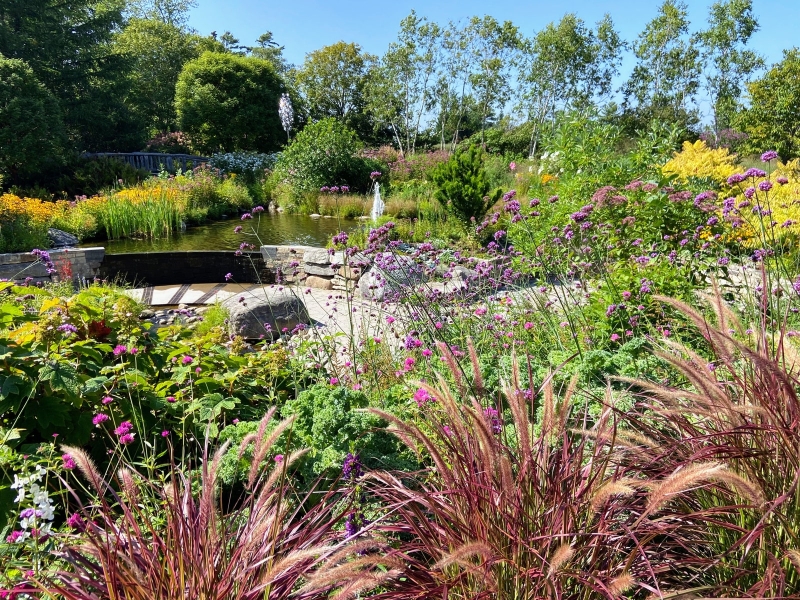
Set along nearly a mile of tidal saltwater frontage, Coastal Maine Botanical Garden is the largest in New England and sits on more than 300 acres. While here, be sure to pop into the native butterfly and moth Gothic-style hoop house as well as the native bee exhibit. Take a stroll around the spiral-shaped dahlia garden and meditate in the Lerner Garden of the Five Senses, with different sections emphasizing taste, smell, sight, sound, and touch. If little ones are in tow, be sure to discover the Guardian of the Seeds—towering trolls made of recycled wood by Danish artist Thomas Dambo.
Marie Selby Botanical Gardens, Florida
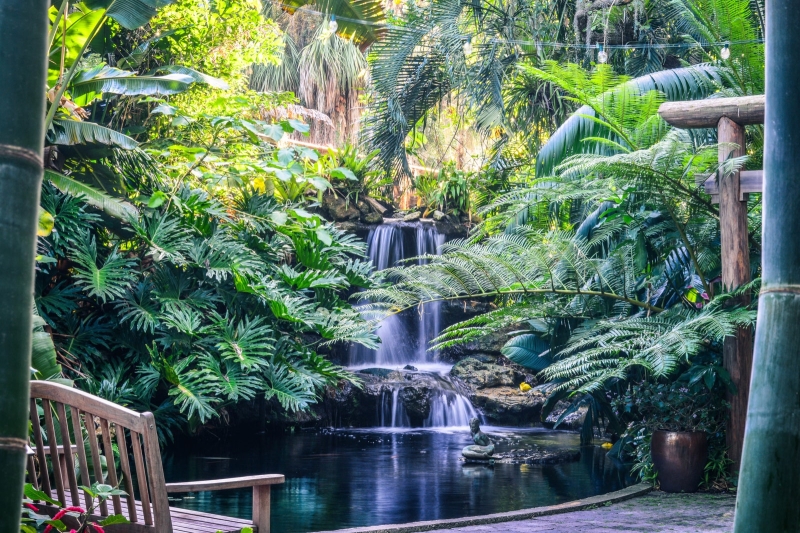
This ’70s-era female-founded botanical garden in Sarasota County sits on 45 collective acres of Bayfront sanctuaries, and is dedicated to epiphytic orchids, bromeliads, gesneriads, and ferns. The Marie Selby Botanical Gardens have two campuses—one that highlights rainforest, desert, native Florida, and display gardens that meander along a mangrove by the bay. And just to the south, the Historic Spanish Point campus offers the opportunity to learn about the region’s collection of native Florida plantings. Spend an afternoon strolling through the bamboo garden followed by an exploration of the banyan grove, with some trees dating back over a century.
Atlanta Botanical Garden, Georgia
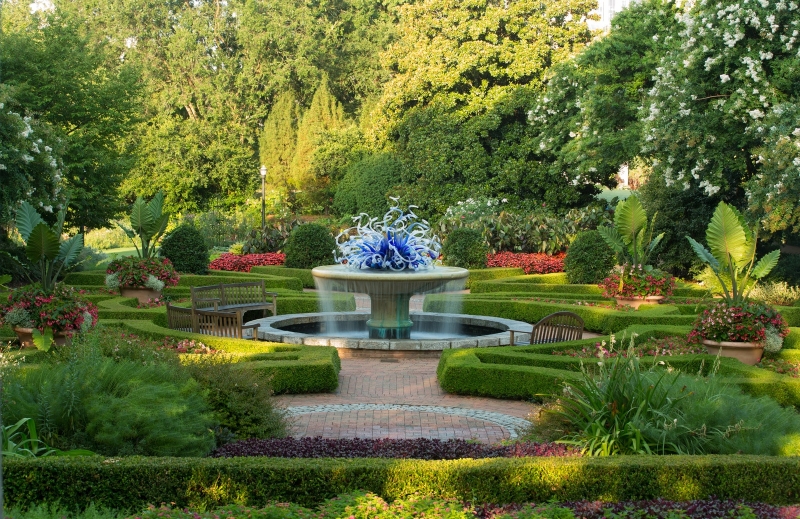
Since its opening in 1976, Atlanta’s Botanical Garden has been an oasis in the heart of Midtown. It stretches across 30 acres with indoor and outdoor gardens for visitors to explore plants from around the world. On property at the Dorothy Chapman Fuqua Conservatory, spot endangered frogs in live displays and stroll around the orangery and tropical rotunda. Outside, enjoy a bite at the garden’s open-air kitchen featuring programs using fresh herbs and vegetables from the edible garden. And if you find yourself here in the spring, be sure to check out the garden’s exhibition featuring collage works by Atlanta artist Lillian Blades titled Orchid Daze: Reflections in Bloom (open until April 14).
Cleveland Botanical Garden, Ohio
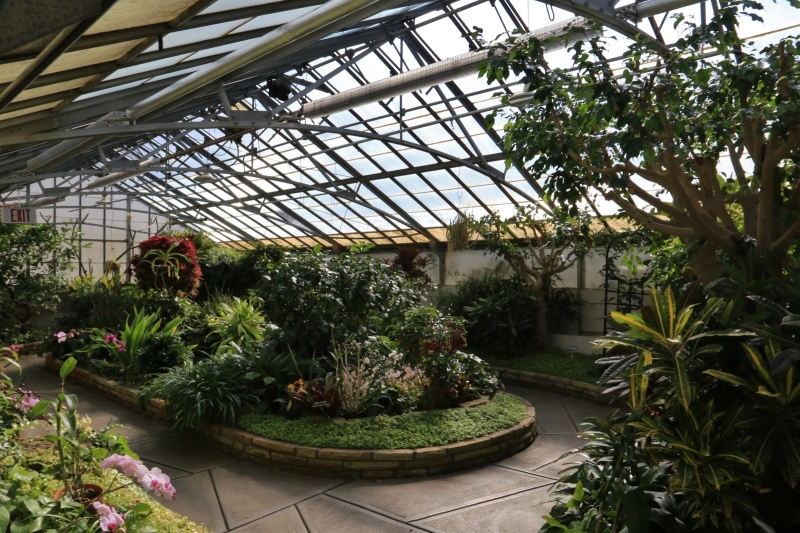
Among the largest public gardens in the country thanks to its integration with the Holden Arboretum, the Cleveland Botanical Garden dates back to 1930 and now holds 2,600 accessions (a type of plant such as a seed, cutting, or grafted plant). Visitors can explore breathtaking displays such as the Madagascar glasshouse with its ‘upside-down’ trees and free-roaming chameleon, or the woodland garden where one might almost forget they’re in a bustling city center. If you’ve got extra time and brought a book, find a bench in the restorative garden and relax among moss, lavender, mint, and the soothing soundtrack of trickling water.
Missouri Botanical Gardens
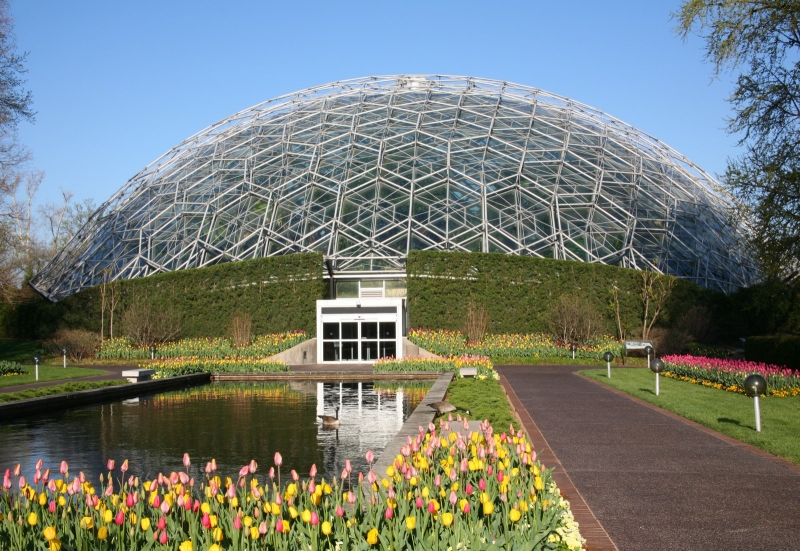
Located in St. Louis, the Missouri Botanical Gardens offer a scenic respite from the city. It was founded in 1859 and is one of the oldest botanical institutions in the states. (it’s also a National Historic Landmark and listed on the National Register of Historic Places.) Emulating a rainforest climate with around 1500 plants, the Climatron greenhouse is a visitor favorite and is the world’s first geodesic dome greenhouse. Other highlights include Henry Shaw’s original 1850 estate home and the Biblical garden featuring plants mentioned in—you guessed it—the Bible.
Daniel Stowe Botanical Garden, North Carolina
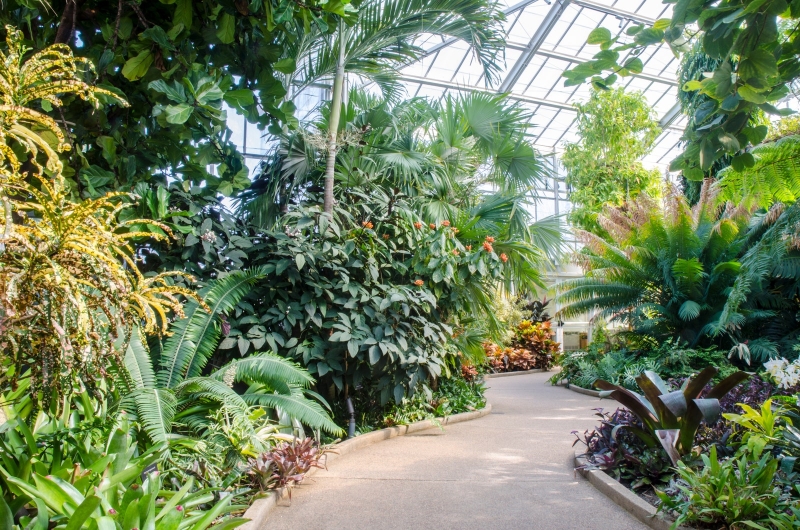
Spend an afternoon exploring the Daniel Stowe Botanical Garden’s nearly 400 acres, 30 of which are dedicated to the 100-year-old stained-glass visitor pavilion with its eight garden rooms (including one for children) and 12 tranquil fountains—expect a magnificent display of tropical plants and orchids. There are six miles of scenic trails accessible within the grounds, winding along the banks of Lake Wylie and even leading to a massive dog park.
Chicago Botanic Garden, Illinois
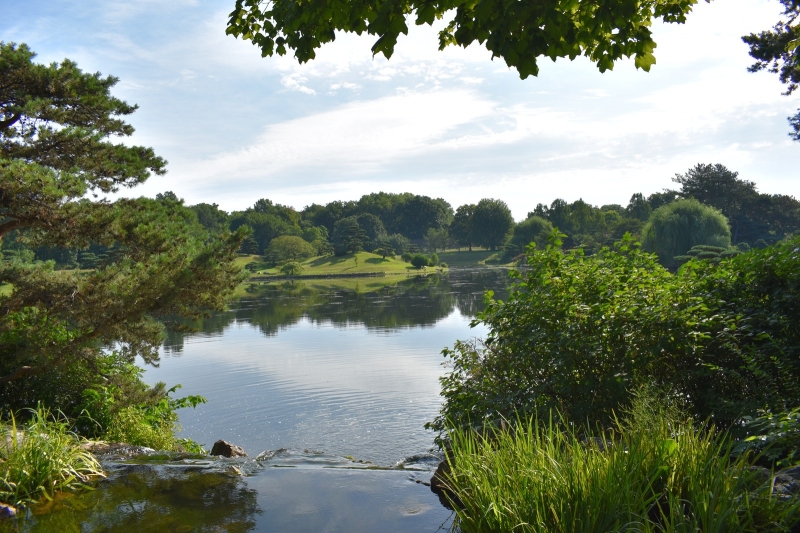
With an astounding 27 gardens clustered throughout 385 acres, the Chicago Botanic Garden is a fever dream of technicolor blooms and incredible plants. Due to its massive size, there are several ways to experience the gardens, from trams and cycling to seasonal walks and birding. If you’re feeling particularly inspired by the geraniums and wisteria, they even offer art courses in drawing, painting, and color theory to help you translate the natural world onto canvas.

